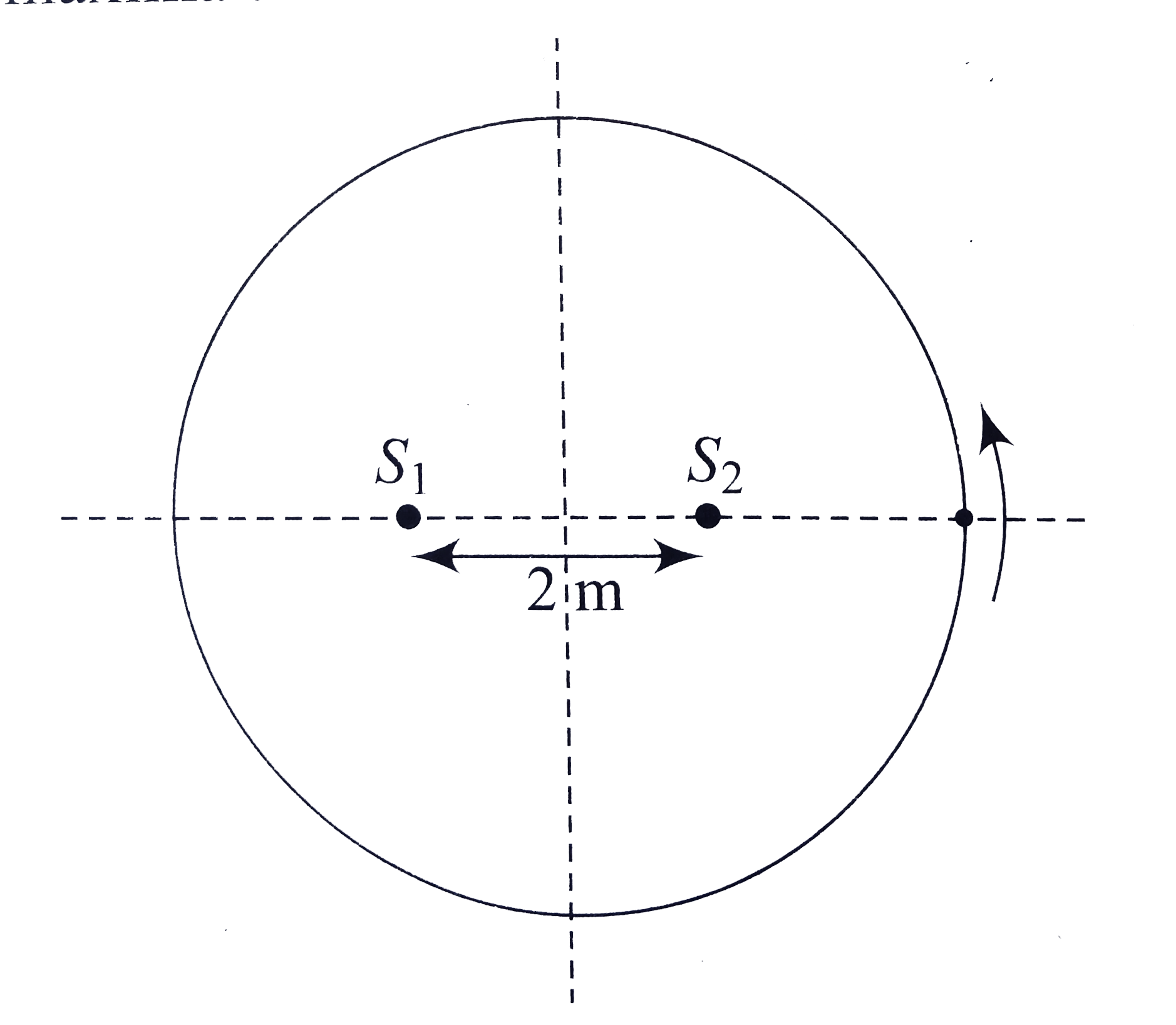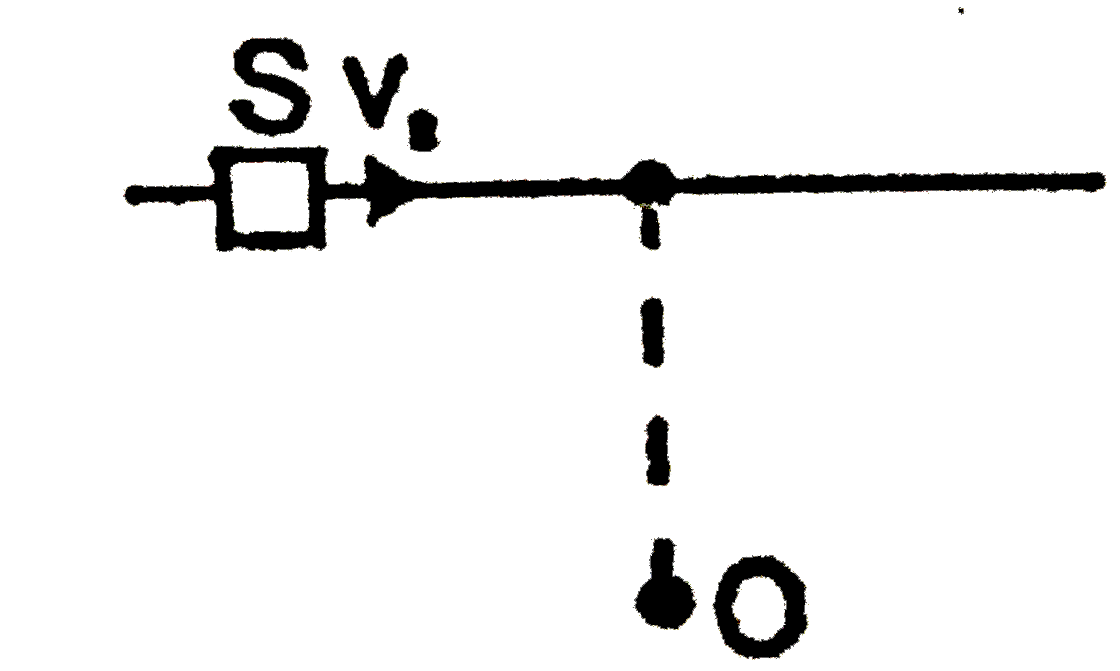Complete Solutions to Exercise of chapter SOUND WAVES of Class 11 book with complete answers and questions
| Class 11 | PHYSICS |
| Chapter | SOUND WAVES |
| RESONANCE | Exercise |
| Number Of Questions | 40 |
| Academic Year | 2023-24 |
When temperature increases, the frequency of a tuning fork
View SolutionAn observer moves towards a stationary source of sound with a velocity one-fifth of the velocity of sound. What is the percentage increase in the apparent frequency?
View SolutionA sound absorber attenuates the sound level by 20 dB. The intensity decreases by a factor of :
View SolutionA police car moving at `22 m//s`, chase a motoclist. The police man has horn at `176 H_(Z)`, While both of them move towards a stationary siran of frequency `165 H_(Z)`. Calulate the speed of the motorcyclist, if he does not observer any beats. (velocity of sound in air `= 330 m//s)`

View SolutionThe ratio of the speed of sound in nitrogen gas to that in helium gas at `300 K` is.
View SolutionTwo monatomic ideal gas 1 and 2 of molecular masses `m_(1) and m_(2)` respectively are enclosed in separate containers kept at same temperature. The ratio of the speed of sound in gas 1 to that in gas 2 is given by
View SolutionA sound wave of frequency 440 Hz is passing through air. An `O_2` molecule (mass`=5.3xx10^(-26)Kg)` is set in oscillation with an amplitude of `10^-6m` speed at the centre of its oscillation is :
View SolutionA wave pulse of frequency 200 Hz, on a string moves a distance 8 m in 0.05 s. Calculate the wavelength of wave on string.
View SolutionThe speed of sound in a particular gas at a temperature `27""^(@)C` is 340 m/s. Then, the speed of sound in the same gas at a temperature `90""^(@)C` is:
View SolutionThe graph between the `(velocity^(2))` and temperature `T` of a gas is
View SolutionThe sound intensity is `0.008 W//m^(2)` at a distance of `10 m` from an isotropic point source of sound. The power of the source it s approximently :
View SolutionA person is talking in a small room and the sound intensity level is 60dB everywhere within the room. If there ar eight people talking simultaneously in the room, what is the sound intensity level?
View Solution`x=x_(1)+x_(2)` (where `x_(1)=4 cos omega t ` and `x_(2)=3 sin omega t`) is the equation of motion of a particle along x-axis. The phase different between `x_(1)` and x is
View SolutionTwo point sources separated by 2.0 m are radiating in phase with `lambda = 0.50 m`. A detector moves in a circular path around the two sources in a plane containing them. How many maxima are detected?

View SolutionAn organ pipe open at one end and closer at other has a length L. the wavelength of the three lowest resonating frequencies that can be produced by this pipe are
View SolutionIf the fundamental frequency of a pipe closed at one is `512 H_(Z)` . The frequency of a pipe of the same dimension but open at both ends will be
View SolutionIf amplitude of a wave is represented by `A=(c )/(a+b-c)`. Then the resonance will occur when.
View SolutionA stationary observer receives sonic oscillations from two tuning forks one of which approaches and the other recedes with the same velocity. As this takes place, the observer hears the beats of frequency `f = 2.0 H_(Z)`. Find the velocity of each tuning fork if their oscillation frequency is `f_(o) = 680 H_(Z)` and the velocity of sound in air is `upsilon = 340 m//s`.
View SolutionTwo waves of frequency 500 Hz and 498 Hz are produced simultaneously. Calculate the time interval between successive maxima.
View SolutionA source of frequency 'f' is stationary and an obsercer starts moving towards it at t=0 with constant small acceleration. Then the variation of observed frequency 'f' registered by the observer with time is best represented as
View SolutionAt each of two stations A and B, a siren is sounding with a constant frequency of 250 cycle `s^-1`. A cyclist from A proceeds straight towards B with a velocity of `12kmh^-1` and hear `5 beats//s`. The velocity of sound is nearly:
View SolutionA sounding body of negligible dimension emiting a frequency of 150 Hz is dropped from a height. During its fall under gravity it passes near a ballon moving up with a constant velocity of 2 m/s . One second after is started to fall , the difference in the frequency observed by the man in ballon just before and just after crossing the body will be (given that velocity of sound = 300 m/s , g = `10 m//s^(2)`)
View SolutionThe source (S) of sound is moving constant velocity `v_(0)` as shown in diagram. An observer O listens to the sound emmited by the source. The observed frequency of the sound

View SolutionAssertion : In a sound wave, a displacement node is a pressure antinode and vice versa.
Reason : Displacement node is a point of minimum displacement
View Solution`S_(1)`: Sound travel faster in water than in air.
`S_(2)`: The fundamental frequency of closed organ pipe increases if its diameter is increased.
`S_(3)`: Beats are created by superposition of two sound waves with the same amplitude moving in same directions with slightly different frequncies.
View SolutionA point `A` is located at a distance `r = 1.5 m` from a point source of sound of frequency `600 H_(Z)`. The power of the source is `0.8 W`. Speed of sound in air is `340 m//s` and density of air is `1.29 kg//m^(3)`. Find at the point `A`, (a) the pressure oscillation amplitude`(Deltap)_(m)` (b) the displacement oscillation amplitude `A`.
View Solution(iv) A closed organ pipe of length 83.2 cm and 6 cm diameter is vibrated. The velocity of sound is 340 m/s. find the number of overtones in this tube having frequency below 1000 Hz ?
View SolutionThe faintest sound the human ear can detect at a frequency of ` kHz` (for which ear is most sensitive) corresponds to an intensity of about `10^(-12)w//m^(2)`. Assuming the density of air `cong1.5kg//m^(3)` and velocity of sound in air `cong300m//s`, the pressure amplitude and displacement amplitude of the sound will be rspectively ____`N//m^(2)` and ____`m`.
View SolutionThe speed of sound in hydrogen at N.T.P. is 1270 metres per second. Thenthe speed in a mixture of hydrogen and oxygen containing hydrogen and oxygen in the ration ` 4 : 1` by volume, will be
View SolutionTwo tuning forks, A and B, produce notes of frequencies 258 Hz and 262 Hz. An unknown note sounded with A produces certain beats. When the same note is sounded with B, the beat frequency gets doubled. The unknown frequency is
View SolutionA sound wave of frequency `f` travels horizontally to the right . It is teflected from a larger vertical plane surface moving to left with a speed `v`. the speed of sound in medium is `c`
(a) The number of waves striking the surface per second is `f(c + upsilon)/(c)`
(b) The wavelength of reflected wave is `(c(c-upsilon))/(f(c+upsilon))`
(c) The frequency of the reflected wave is ` f((c+upsilon))/((c+upsilon))`
(d) The number of beats heard by a stationary listener to the left of the reflecting surface is `(upsilon f)/(c - upsilon)`
View SolutionA stationary wave is represented by y = A sin (100 t) cos (0.01 x) , where y and A are in millimetres , t is in second and x is in metre. The velocity of the constituent wave is
View SolutionThe speed of sound in air is 333 m/s. The fundamental frequency of the open pipe is 333 Hz. The second oevertone of the open organ pipe can be produced with a pipe of length
View SolutionA closed organ pipe and an open organ pipe are tuned to the same fundamental frequency. The ratio of their lengths is
View SolutionThe equation of a stationary wave is y=0.8cos`((pix)/(20))sin200pit` where x is in cm, and t is in s. the separation between consecutive nodes will be:
View SolutionA sound is moving towards a stationary listener with `1/10^(th)` of the speed of sound. The ratio of apparent to real frequency is
View SolutionThe frequency of the whistle of an engine appears to drop to `(2)/(3)rd` of its actual value when it passes a stationary observer. Velocity of sound in air is 330 m/s then the speed of engine is
View SolutionA police car horn emits a sound at a frequency 240 Hz. When the car is at rest. If the speed of the sound is 330 m/s the frequency heard by an observer who is approching the car at a speed of 11 m/s is
View SolutionA man is watching two trains, one leaving and the other coming in with equal speed of 4 m/s. If they sound their whistles, each of frequency 240 Hz, the number of beats heard by the man (velocity of sound in air is `320(m)/(s)`) will be equal to
View SolutionStatement 1: In sound waves variation of pressure and density of a gas above and below average have maximum value at displacement node.
Statement 2: When particles on opposite sides of displacement node approach each other, gas between them is compressed and pressure rises so that at displacement node gas undergoes maximum amount of compression.
View Solution
Exercise questions and complete solutions for chapter SOUND WAVES of RESONANCE ENGLISH of Class 11